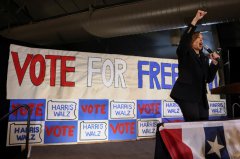The last voyage of the Rainbow Warrior
The old trawler ploughed through the waves of the Pacific Ocean. It was May, 1985.
The word Greenpeace was emblazoned on its side in large white letters. Two months later, it would be sitting at the bottom of a harbour in New Zealand with holes blown in its hull by French intelligence operatives.
But for now, it was on its way from Hawai'i to the Marshall Islands on a very unusual journey.
There would be no banners, slogans or megaphones. Instead, the 12-person crew of The Rainbow Warrior was on a rescue mission.
They were going to ship the entire population of Rongelap, an island in the Western Pacific — 300 people and 100 tonnes of building materials — 180 kilometres away to another island, named Mejato.
But why would an entire community be forced to move from their ancestral land? And why would a Greenpeace ship need to help?
After America's devastating demonstration in Japan in World War II, the world lived in fear of nuclear war. But in the Pacific, residents were all too familiar with nuclear weapons – and the fallout.
The day of two suns
Rongelap is one of 29 atolls that make up the Marshall Islands, sitting just north of the equator.
On this particular Monday morning in 1954 – well before The Rainbow Warrior's journey towards her home — seven-year-old Mina was woken by a loud boom.
Running outside with everyone else, she saw the sun rising in the East. That was normal.
But at the same time, she saw what looked like another sun rising in the West.
"I remember coming out to see just white, ashes, falling everywhere, covering everything, our house, our food, our drinking water," she told The Last Voyage of the Rainbow Warrior.
Schoolteacher Billiet Edmond was also there. He described in his diary the "huge and fiery sun-like object [that] rose up in the western part of the lagoon".
"None of us could move, but everyone stared at the fireball without a word. Then the queer-looking fiery object became a giant mushroom and then another and then another and still another grew upon another," he wrote.
That sun was a nuclear explosion 1,000 times more powerful than those in Japan, detonated by the United States at neighbouring Bikini Atoll as part of their testing programme.
Bikini's residents were evacuated before the explosion, codenamed Bravo. But those on Rongelap, 150km away, were not so fortunate.
An invisible poison carried by the wind was already settling into their land, and the children — struck with wonder at what appeared to be snow — eagerly played in the thermonuclear debris raining down.
Two days later, a US warship dropped anchor in the lagoon by the island and told the people of Rongelap they needed to leave their homes and everything they knew behind.
"Before everybody went inside the ship, we were all clustered together and they began taking our clothes off and began hosing everybody down. Which I found to be very different, very surreal," Mina recalled.
"At first, I remember we were giggling, but as I grew up, I realised how sad it was, what happened, how we were treated that like in front of adults and family."
Sick, burnt, their hair coming out in clumps, their bodies covered with sores, the people of Rongelap, now nuclear refugees, were unloaded on Kwajalein Atoll – 250km south – like cargo.
"I remember wherever we go, people tried to stay away from us, keep a distance. They would call us 'bokelap' – explosion. They would say, 'Ah, those are the bokelap people. Stay away from them, you don't want to get poisoned'. And this is what we had to deal with," Mina said.
The people of Rongelap stayed there for three years while US doctors monitored them and studied them.
Just three years later, they would return home, with assurances from the US that it was "safe".
But a scientist at Brookhaven National Laboratory, which was under contract with the Atomic Energy Commission at the time, said:
"Even though… the radioactive contamination of Rongelap island is considered perfectly safe for human habitation, the levels of activity are higher than those found in other inhabited locations in the world.
"The habitation of these people on the island will afford most valuable ecological radiation data on human beings."
'Safe' to return
Jeton Anjain was 20 years old and studying dentistry in Fiji, far away from his home of Rongelap, when the US pulled the trigger on their nuclear test.
More than 20 years later, he was elected senator for Rongelap and then became health minister for the entire Marshall Islands.
But he was getting increasingly frustrated, and quietly angry about the situation of his people in his home, Rongelap Atoll.
Three years after they were evacuated, they were returned to their home, with the US Atomic Energy Commission declaring it was safe to live on Rongelap again. Bikini remained deserted due to high radiation levels.
But despite that declaration, people started getting sick.
By 1958, the rate at which Rongelap women suffered miscarriages or stillbirths was twice that of women who hadn't been exposed to radiation. Babies that survived often could have slower than normal rates of growth, and a variety of other problems.
By the mid-1960s there was no doubt the radiation had done serious damage to many people's thyroid glands. All the exposed population got thyroid hormone treatment and anyone with thyroid nodules were taken to hospitals in the US and compensated at the rate of $25,000 per surgery.
When Anjain's grand-niece died "while giving birth to a very deformed baby", he snapped, according to Abaca Anjain-Maddison, his daughter.
"That's what really triggered him to fight for justice and really come out not just within the Marshall Islands and parliament, but to the United States and calling on help from other organisations around the world," she said.
By 1985, the people of Rongelap were fed up with the sickness, the disabilities, and the deformed births.
Anjain was in front of the United Nations, with a US report showing that parts of Rongelap were just as irradiated as the worst parts of Bikini. He asked for help and money to relocate his people to another island for safety reasons.
Their request was considered. Then declined. No one would help them leave. No one would tell them why.
They needed help – and it would come from an unlikely place.
An unusual mission
Giff Johnson, a newspaper editor in the Marshall Islands, was a passionate advocate against nuclear testing in the Pacific.
He was drawn to Anjain and empathised with his frustration. Crucially, he also had strong ties to advocacy and anti-nuclear groups.
"So the Greenpeace people were talking about the Rainbow Warrior making this big Pacific tour in 1985 … and they were just starting to plan each of the stops," Johnson said.
"And so the Greenpeace folks said to me, 'Look, we want to go to the Marshall Islands ... we want to be useful. Yeah, we can hang a banner or you know, do the usual Greenpeace thing. But can we do something that's more meaningful?'
"The way I recall the meeting going is Jeton said to [then Greenpeace head Steve Sawyer], 'Well, we want to evacuate Rongelap.' And so Steve said, 'Oh okay, like, you mean a symbolic evacuation. Like we sail around … we get 20 or 30 people on the Rainbow Warrior … and then we do a big press conference?'
"And there was a pause and Jeton says, 'No, so what I'm talking about… We want to evacuate the entire community, houses, everything, and move to Mejato Island in Kwajalein Atoll, because we fear for our future on Rongelap.'"
It was an ambitious plan and a major departure for Greenpeace.
But in May 1985, sailing from Hawai'i to Rongelap, the Rainbow Warrior made its fateful journey.
When it arrived in the lagoon at Rongelap, it was welcomed by a small plywood boat.
The women and children on board were singing, and an elderly woman held a sign saying: "We love the future of our children."
The crew dropped anchor and followed the woman ashore in an inflatable. As they came onto the beach they saw a banner, an archway that repeated the words.
It looked idyllic. Blue seas, blue sky, green palm trees.
It was easy to forget the reason the community was moving.
But days later, houses were dismantled, pieces of plywood and corrugated iron bundled together and named to go aboard the Rainbow Warrior.
Travelling to Mejato was an overnight trip, and it had to be timed so the reef could be navigated during the day.
It took three trips to move the entire community and everything they owned across.
The Rainbow Warrior's photographer Fernando Pereira documented the entire process, his images capturing both the surreal reality of the situation, the inherent strangeness in moving an entire population from one island to another, and also the joy from adults as they help their children.
One image shows the men lifting the children up and passing them to other men on board.
Another shows a woman with two children on the deck of the Warrior. Though they're safe, they're forlorn.
There was an undercurrent of anger, too.
"Moving a community from the very fabric of their society, their … ancestor's land, you know, just moving them like it's a pet animal you're moving from one house to another house," said Kenneth Kedi, who has never forgotten what the move was like.
After three trips, the evacuation was complete. Apart from a small team of men, staying behind to take some measurements before leaving forever, the island was empty. The rows of houses were gone. The people were gone too.
Before the Warrior finished up and sailed away, some of the islanders wrote a message:
We, the people of Rongelap, love our homeland. But how can our people live in a place which is dangerous and poisonous? Why didn't the American people test Bravo in a state capital? Why? Rainbow Warrior, thank you for being so nice to us. Keep up your good work.
The Rainbow Warrior and her crew would go on to stage a protest at the American missile base at Kwajalein Atoll, then sail to Kiribati and Vanuatu. Then, the long leg south to Auckland for two weeks of rest before heading to French Polynesia to lead a large flotilla protesting French nuclear testing in the South Pacific.
But that protest against French testing would never happen, because when she left the Marshall Islands, the Rainbow Warrior had embarked on her last journey.
In Auckland harbour, as some of the crew celebrated a birthday on board, two mines planted by French secret agents exploded on its hull.
Pereira was killed, the ship was sunk, and a diplomatic storm was unleashed.
Uninhabited
2025 marks 40 years since the evacuation of Rongelap and the bombing of the Rainbow Warrior.
It's been 30 years since the end of nuclear testing in the Pacific.
In 1986, the US committed $150 million in a trust fund as compensation to those forced to evacuate, but successive administrations have refused any more
In 2012, the Obama administration said it acknowledged "the negative effects of our nuclear testing program and has accepted, and acted on, our responsibility to the people of the Marshall Islands".
"The United States continues to support the Marshall Islands by providing radiation-related health care services and continued monitoring and environmental assessments on the affected atolls.
"The United States is committed to a continuing dialogue and cooperation with the Marshallese people and their government on this important issue."
Rongelap Atoll remains uninhabited.
Listen to the full podcast series, The Last Voyage of the Rainbow Warrior.
Credits
- Production: Dan Smith
- Reporting: James Nokise
- Research/reporting: Justin Gregory
- Photography: Greenpeace, AP, Wikimedia Commons
- Copy link
- X (formerly Twitter)
Related topics
Back to topBy:ABC(责任编辑:admin)
下一篇:Alex de Minaur beaten by Daniil Medvedev in ATP Finals
 Socceroos rescue a point
Socceroos rescue a point  Wallabies thrash Wales 52
Wallabies thrash Wales 52 Jake Paul beats Mike Tyso
Jake Paul beats Mike Tyso Live updates: England vs
Live updates: England vs  US election 2024: Donald
US election 2024: Donald  US election live: Kamala
US election live: Kamala
- ·North Korea's latest weapon agains
- ·Hezbollah says Israel 'cannot impo
- ·Inside the rise of US oligarchs and how
- ·Thailand's worst suspected serial
- ·Tabi shoes are turning heads from Holly
- ·FBI arrests Florida man planning attack
- ·Illegal immigrant gets life sentence fo
- ·Bibles, water, watches and sneakers: Do
- ·North Korea's latest weapon against
- ·Hezbollah says Israel 'cannot impose
- ·Inside the rise of US oligarchs and how i
- ·Thailand's worst suspected serial ki
- ·Tabi shoes are turning heads from Hollywo
- ·FBI arrests Florida man planning attack o
- ·Illegal immigrant gets life sentence for
- ·Bibles, water, watches and sneakers: Dona
- ·US to give Kyiv anti-personnel landmines
- ·An arrest warrant for Benjamin Netanyahu
- ·One of Vietnam's high-profile politi
- ·Shanghai Walmart Attack: A Man Randomly S
- ·South Korean police officers jailed over
- ·Cambodia publicly shames maid deported af
- ·North Korea to use all forces including n
- ·Philippines condemns China attack of Viet
- ·US adds 2 more Chinese companies to Uyghu
- ·North Korean defector steals South Korean
- ·Malaysia deports Cambodian worker for cal
- ·Rebels battle for Myanmar junta’s weste

